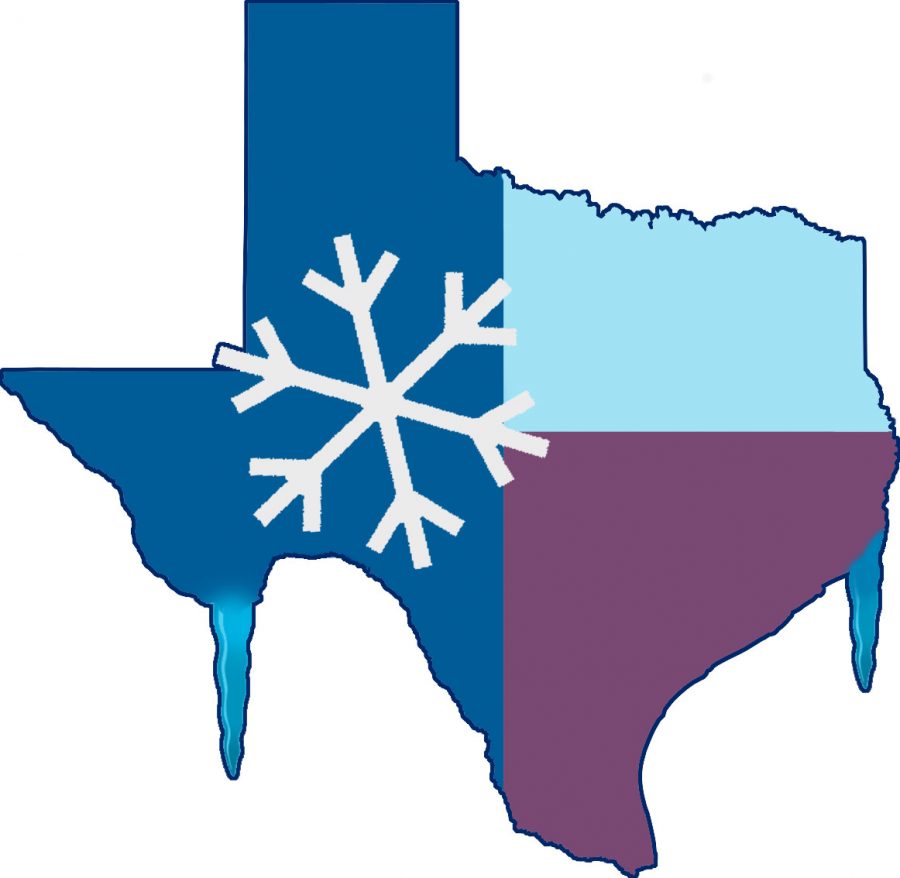A massive cold front from the arctic circle hit Texas hard on Feb. 13. Schools and many businesses had to shut down, many homes lost water, and the Electric Reliability Council of Texas (ERCOT) took measures to conserve power.
The snow from February had caused Weatherford High School, as well as many other Texas schools, to be shut down temporarily. It also caused almost all of Texas to experience what were referred to as “rolling blackouts,” which were intended for some power to be allocated to some homes for a period of time, and then allocated to others for another period of time. That way homes could still be kept warm but too much power wouldn’t be used at once.
Some places were put on a “Boil Water Notice,” where people were instructed to boil all water from their pipes, as the facilities that treated the water were out of power along with many busted pipes, making it unsafe to drink.
The severe cold weather froze natural gas pipelines, fossil fuel generators, and wind turbines. Which meant that Texas was producing much less power with only the remaining, less frozen power sources producing electricity. This wouldn’t have been a large problem if it weren’t for the disconnected electricity grid of Texas.
Almost every other state (With the exception of Alaska and Hawaii) is interconnected with others in one of two major electricity grids, split between east and west North America. Texas is disconnected, with a grid all on it’s own.
The Lone Star’s lone power grid was seen as an example of Texas’ independence from the U.S. Becoming a source of pride for Texas’ politicians. The refusal to connect Texas’ power grid to another allowed ERCOT to avoid regulations that would’ve prepared Texas for this event, including the winterization of the pipes, generators, and turbines that would’ve allowed them to keep running despite the freezing temperatures. Former Texas governor and former Secretary of Energy, Rick Perry, said “Texans would be without electricity for longer than three days to keep the federal government out of their business.”
Many politicians attempted to use the storm and power crisis as an opportunity to blame renewable energy. Claiming that the freezing of the wind powered turbines was the primary cause for the lack of power. However all power sources in Texas fell short during the snow, gas power more so than others.
Another issue that arose from the blackouts were the numerous reports about cities and wealthier neighborhoods not losing power at all, while poorer neighborhoods spent several days without heat. Areas with crucial infrastructure, such as hospitals and government buildings, kept their power full time. This benefitted the denser, richer, neighborhoods that have these buildings, while leaving the impoverished areas in the cold, which resulted in 57 deaths. A few people made the claim that these actions were influenced by the class or race of the people living in these neighborhoods.
Texans can look back not only on how this cold weather shut down our power grid and water treatment centers, but also on how this could’ve been prevented. If ERCOT had connected the Texas grid to one of the American power grids, Texas would have been able to borrow power from unaffected states, and we would have also had those regulations that would’ve prevented us from losing any power in the first place.


